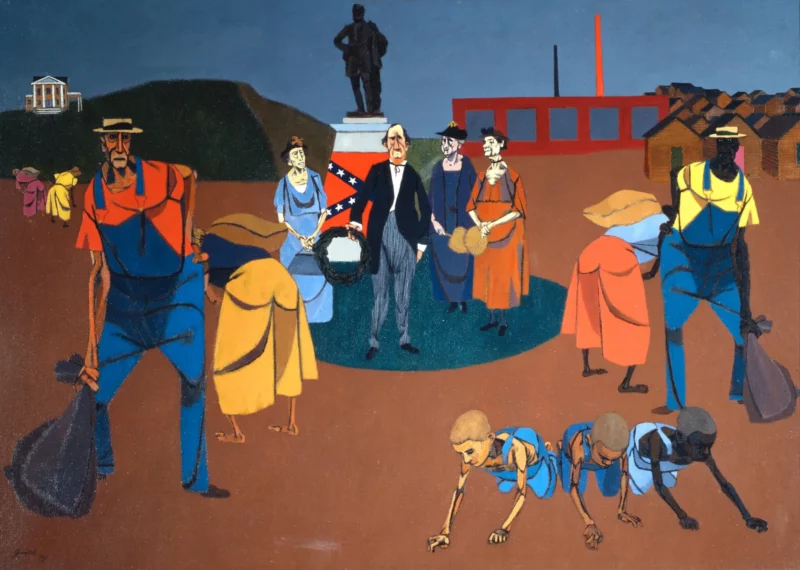‘Southern/Modern’: Rediscovering the Radical Art Below the Mason-Dixon Line
Share
Explore Our Galleries
Breaking News!
Today's news and culture by Black and other reporters in the Black and mainstream media.
Ways to Support ABHM?
By Walker Mimms, New York Times

Of the many strengths of “Southern/Modern,” a daring and revisionist show about the American South at the Georgia Museum of Art in Athens, the one that follows you out to your car is the alternate history of modern art it proposes.
Southern art — or food or literature, for that matter — has long suffered a reputation of isolation. “You cant understand it. You would have to be born there,” says the tortured Quentin in William Faulkner’s “Absalom, Absalom!” Ninety years later, Southern exceptionalism is over (mostly), and the area’s artists and curators and chefs now go to great, overcorrective lengths to be global, to be modern. But the artists of Faulkner’s day — they were still responding to an ancient, haunted South. Their audience was stationary, and their language local. They were regionalists. Or so the story goes.
Not here. These 100 or so paintings and prints suggest an invigorating direction that was there all along: a pungent pairing of social history with artistic experiment during the first half of the 20th century. By bringing together professional artists who worked below the Mason-Dixon Line (exempting Florida) between 1913 and 1956, and as far west as Arkansas and Missouri, “Southern/Modern” surveys the riches of a stylistic evolution you will find at, say, the Museum of Modern Art in New York — the Impressionism that loosened up the 1900s, the Cubism of the 1910s, the Surrealism of the ’20s, the modeled social realism of the ’30s, the feral abstractions of the ’40s and ’50s — as told by a region often buried in the art history books.
[…]
The lobes of cyan and mud-green in Fitzpatrick’s “Negro Baptising” (1930) jelly into a sunny riverbend. Two parishioners are about to be dunked. In the distance, further stripes of paint indicate hundreds of Black spectators on the bank — none personalized but each a person. Around them all, a tall bridge traces the inner margins of the canvas, with the piers of the bridge at right and its guard rail running along the top. It’s a framing device George Bellows and other urbans employed to remind us where we, the viewers, stand — that is, outside the action. But in Fitzpatrick’s pastoral setting, the bridge illuminates our subject: A maligned community, in other words, will baptize wherever it must, even under the irksome wagon-clack of overhead traffic.
Discover more about the exhibit.
Fans of art and history should stop by our Portraits of Resistance gallery.









Comments Are Welcome
Note: We moderate submissions in order to create a space for meaningful dialogue, a space where museum visitors – adults and youth –– can exchange informed, thoughtful, and relevant comments that add value to our exhibits.
Racial slurs, personal attacks, obscenity, profanity, and SHOUTING do not meet the above standard. Such comments are posted in the exhibit Hateful Speech. Commercial promotions, impersonations, and incoherent comments likewise fail to meet our goals, so will not be posted. Submissions longer than 120 words will be shortened.
See our full Comments Policy here.